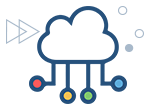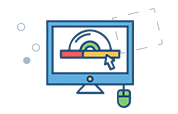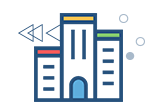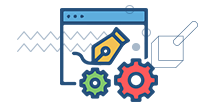- What is help desk software?
- What are the types of help desk software?
- What are the differences between a help desk and a service desk?
- What are the features of help desk software? (Free checklist attached)
- What are the benefits of help desk ticketing software?
- Why is a help desk important for your business?
- How does help desk software work in different industries? (Workflow attached)
- How do you choose help desk software that works for you?
- How do you measure help desk metrics and KPIs?
- What are some best practices to improve your help desk performance?
- What are the benefits of automating routing help desk activities?
- Why do organizations need an integrated help desk software?
- What are the key challenges IT help desks teams are likely to face?
- What's the future of help desk support?
What is an IT help desk?

IT help desks deliver a variety of IT services in an organization. The help desk typically serves as the single point of contact for any requirement, issue, or assistance end users need to access technology services.
In mature organizations, the help desk guarantees timely assistance and prompt resolution of issues by defining and publishing their assured service levels. By delivering such high levels of service, organizations can meet their business goals and increase their leverage in the market.
What is IT help desk software?
IT teams typically deploy help desk software to manage the IT ticket life cycle, automate routine tasks, and optimize their processes and workflows, which directly results in increased productivity, reduced costs, better service levels, and improved customer experience.
Some key features of help desk software include:

-
Incident and service request management
Manage the life cycle of incidents or service requests raised by end users.

-
Problem and change management
Manage the life cycle of a problem or change from creation to closure.

-
Self-service portal
Allow users to resolve common issues on their own and reduce the help desk technician's workload.

-
Service level agreement (SLA) management
Manage the quality and timeliness of services provided to end users.

-
Asset management
Manage an organization's hardware and software assets.

-
Other features
Some help desk management software may also include other modules for project management, contracts, purchase management, etc.
Why is a help desk important for your business?

Any organization that uses IT capabilities needs a system for managing them, too. IT trouble ticketing software adds value by helping organizations better manage IT operations. The points below illustrate how organizations can benefit from using a help desk solution.
Single point of contact
An IT support ticket system converges all inbound communication and converts the help desk into a single point of contact for all IT-related questions.
Automation
Help desk software automates tasks, processes, and workflows, reducing human error and the technician's workload.
Customization
Each organization can customize forms, templates, workflows, etc. to meet their needs.
Centralization
All data, requests, queries, and tickets are centralized in one place, which makes it easier to access and manage them.
Efficiency
With well-defined workflows and processes, help desk support software helps eliminate redundant tasks and boosts efficiency.
Continuity
With the right tools, IT teams can minimizes service interruptions.
SLA management
An IT help desk ticketing system allows users to set, track, and manage SLAs to ensure that services are provided on time.
Fosters collaboration
Different teams, technician groups, individual technicians, etc. can collaborate easily through help desk software.
Transparency
Requesters and technicians can view the accurate, current status of their requests and tickets.
Risk management
Users can assign, analyze, and manage risks associated with an incident, problem, or change.
Prioritize requests
Any incoming incident or service request can be given an appropriate priority and handled accordingly.
Self-service
End users can access solutions to common issues to fix problems themselves.
Reporting and metrics
Help desk software allows users to define and track important key performance indicators (KPIs) and generate reports to assess overall help desk health.
Improves customer satisfaction
A better managed IT help desk leads to higher satisfaction among end users.
What are the types of help desk software?

Help desks can be classified into different types based on deployment method, size of target audience, and source code availability, as listed below:

Cloud
- SaaS help desk
- Hosted on vendor's server
- Scalable in size
- Recurring subscription costs

Enterprise
- Hosted on local server
- Requires in-house IT team
- One-time license fee
- Recurring cost for services

Enterprise
- Feature-rich
- Highly customizable
- More than basic help desk
- Part of a bigger service desk

Enterprise
- Source code is accessible
- Might be free
- Very flexible
- Low vendor dependency
Cloud-based help desk software
- This is a SaaS help desk tool, hosted on the vendor's server.
- Customers usually subscribe to the service on a monthly or annual basis and access it through a local desktop or mobile client, or through the vendor's website.
- Cloud-based help desks are typically preferred by small and medium-sized businesses that lack an in-house IT team. However, many help desk vendors can scale up their offerings to cater to larger organizations as well.
On-premises help desk software
- This type of help desk tool is hosted locally on the customer's server.
- Customers usually pay the vendor a one-time payment to purchase a software license, but recurring payments can be made for associated services like customer support, integrations, etc.
- Since on-premises help desk ticketing software is hosted and maintained locally, customers are typically enterprise-level organizations with in-house IT teams and resources to procure and maintain their own server.
Enterprise help desk software
- A highly feature-rich help desk software solution that supports a number of complex modules.
- Enterprise help desk ticketing software can be customized to fit a particular organization's or industry's workflows.
- Since enterprise ticketing system software supports a wide number of complex modules, it goes beyond IT services and support and helps improve the overall efficiency of an organization.
- Usually, enterprise help desk systems are a part of help desk management, and they frequently come bundled with other modules like CRM.
Open source help desk software/free help desk software
- As the name suggests, this type of help desk software allows open access to its source code; some applications are even offered for free.
- This type of help desk software system is typically preferred by organizations that have strong in-house programming know-how to leverage the unrestricted access to source code.
- With open-source help desk software, users need not depend on the vendor for integrations, bug fixes, customizations, etc.
What are the differences between a help desk and a service desk?

For a long time, the terms "help desk" and "service desk" have been used interchangeably and to the average end-user, the difference often remains blurry. Here are some of the key differences between help desks and service desks.
| Help desk software | Service desk software |
|---|---|
| Help desks are user-centric | Service desks are business-centric |
| Help desks are point solutions | Service desks are integrated |
| Help desks are reactive in nature | Service desks are more proactive |
| Help desks are for end users | Service desks are for both technicians and end users |
| Help desks are a subset of service desks | |
Help desks are user-centric, while service desks are business-centric
The core function of a help desk is to handle incidents and service requests.
Help desks aim to provide a quick fix to any issues users face by handling a request through its life cycle and returning the service to its normal state as soon as possible. So the focus of a help desk is largely limited to end users.
On the other hand, a service desk is more comprehensive in nature. Service desks align with organizations' business goals and manage information delivery by using processes that follow industry best practices.
In short, service desks are built to focus on best practice processes and business goals.
Help desks are point solutions, while service desks are integrated
An IT help desk is a stand-alone solution that performs tasks related to resolving help desk tickets.
Help desks most often offer basic incident and problem management capabilities with SLAs and self-service portals.
An IT service desk, however, is a more elaborate system with complete IT management capabilities.
Service desks integrate with other IT and non-IT management applications and are therefore capable of providing advanced services like change management, asset management, network monitoring, CMDBs, etc.
Help desks are reactive in nature, while service desks are more proactive
An IT help desk usually provides support to end users. This firefighting setup makes help desks predominantly reactive to the issues that come up in day-to-day IT operations.
An IT service desk is more proactive since it ensures that IT operations are running as expected and will continue to run in the future.
Although service desks also perform many reactive tasks as well, their major function is proactively ensuring that IT services are always up and supporting the business as needed.
Help desks are for end users, while service desks are for both technicians and end users
An IT help desk usually allows end users to raise tickets and receive support. Help desks generally offer other services like knowledge bases and self-service portals, which are oriented toward end users.
A service desk, however, offers capabilities like change and asset management, which are complex, technician-facing services.
Help desks are a subset of service desks
A help desk can exist as a stand-alone service that provides support to end users. But since service desks offer more complex services in addition to basic incident and problem management, most organizations incorporate the help desk as a part of their service desk.
Simply put, many organizations today use a help desk without a service desk, but not the other way around.
IT help desk software evaluation kit
An exclusive package of a feature checklist and a request for proposal (RFP) template
-
Feature checklist
Comprehensive list of must-have features that you can use as a benchmark
-
RFP template
A guide to a great RFP that helps you get all the information you need about a vendor

